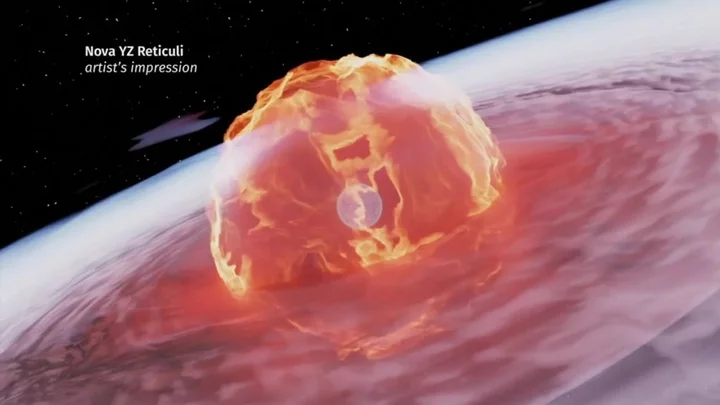Scientists have spent 20 years putting together time-lapse footage offering a stunning window into the past. Two decades of data taken from NASA’s Chandra X-ray Observatory were used by astronomers to create a video of a stellar eruption that actually occurred 180 years ago. Observations from Chandra, taken in 1999, 2003, 2009, 2014 and 2020 were all used, in combination with data from ESA’s XMM-Newton spacecraft. With the combined data, experts were able to capture the stellar explosion, known as Eta Carinae. Eta Carinae is a famous star system containing two large stars, one of which is around 90 times larger than the Sun, while the other is around 30 times as large. The “Great Eruption” from Eta Carinae is believed to be the result of the merging of two stars that were originally part of a three-star system. Eta Carinae Time-Lapse, Chandra X-ray Observatory www.youtube.com It first took place in the mid-19th century and the aftermath is still continuing to be observed today. New footage shows how the explosion has expanded into space with staggering speeds of up to 4.5 million miles per hour. In a statement, NASA officials explained: “During this event, Eta Carinae ejected between 10 and 45 times the mass of the sun. This material became a dense pair of spherical clouds of gas, now called the Homunculus Nebula, on opposite sides of the two stars.” The Homunculus Nebula is the blue cloud visible in the video, while the growing bright orange ring shows how X-ray emissions have grown and expanded over time. “The new movie of Chandra, plus a deep, summed image generated by adding the data together, reveal important hints about Eta Carinae’s volatile history,” the statement read. “This includes the rapid expansion of the ring, and a previously-unknown faint shell of X-rays outside it.” Sign up to our free Indy100 weekly newsletter Have your say in our news democracy. Click the upvote icon at the top of the page to help raise this article through the indy100 rankings.
Scientists have spent 20 years putting together time-lapse footage offering a stunning window into the past.
Two decades of data taken from NASA’s Chandra X-ray Observatory were used by astronomers to create a video of a stellar eruption that actually occurred 180 years ago.
Observations from Chandra, taken in 1999, 2003, 2009, 2014 and 2020 were all used, in combination with data from ESA’s XMM-Newton spacecraft.
With the combined data, experts were able to capture the stellar explosion, known as Eta Carinae.
Eta Carinae is a famous star system containing two large stars, one of which is around 90 times larger than the Sun, while the other is around 30 times as large.
The “Great Eruption” from Eta Carinae is believed to be the result of the merging of two stars that were originally part of a three-star system.
Eta Carinae Time-Lapse, Chandra X-ray Observatory www.youtube.com
It first took place in the mid-19th century and the aftermath is still continuing to be observed today.
New footage shows how the explosion has expanded into space with staggering speeds of up to 4.5 million miles per hour.
In a statement, NASA officials explained: “During this event, Eta Carinae ejected between 10 and 45 times the mass of the sun. This material became a dense pair of spherical clouds of gas, now called the Homunculus Nebula, on opposite sides of the two stars.”
The Homunculus Nebula is the blue cloud visible in the video, while the growing bright orange ring shows how X-ray emissions have grown and expanded over time.
“The new movie of Chandra, plus a deep, summed image generated by adding the data together, reveal important hints about Eta Carinae’s volatile history,” the statement read.
“This includes the rapid expansion of the ring, and a previously-unknown faint shell of X-rays outside it.”
Sign up to our free Indy100 weekly newsletter
Have your say in our news democracy. Click the upvote icon at the top of the page to help raise this article through the indy100 rankings.

